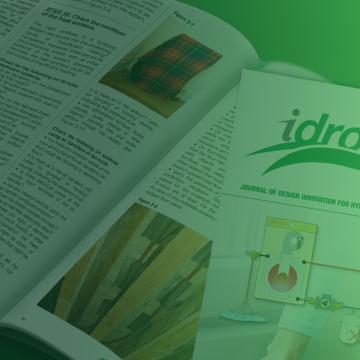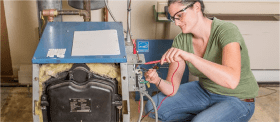In North America, there’s an ongoing need for technicians who can diagnose and correct issues with all types of HVAC systems. Labor projections consistently show that this demand will become even more pressing in the future. Most manufacturers offering “packaged” heating and cooling systems provide product-specific training that covers installation and service issues for their equipment. This is also the case for manufacturers of hydronic heat sources, such as boilers and heat pumps. However, hydronic heating and cooling systems contain hardware from many diverse and independent manufacturers. There are also many viable ways to assemble that hardware, depending on the specifics of the project, budget and capabilities of the devices used. These circumstances create potential performance issues that no manufacturer can necessarily anticipate nor cover in training.
Technicians who have worked with hydronic systems for several years typically gain the knowledge and experience needed to quickly diagnose problems and restore normal operation, but novice technicians lack broad troubleshooting skills, especially when dealing with highly customized systems. Very few building owners have the background to correctly troubleshoot and maintain the hydronic systems in their buildings. Many are quick to “blame” the system’s heat source whenever a comfort issue develops. For example, if the temperature in one area of a house drops below the thermostat setpoint on a cold winter night, a homeowner often assumes that the heat source (boiler, heatpump, etc.) is undersized. They are not necessarily thinking about the overall system.
Experience has shown that many performance issues with hydronic systems are not the “fault” of the heat source, but rather how the distribution system interfaces with the heat source, or a lack of proper detailing in parts of the system other than the heat source. This issue of idronics addresses generic performance issues with hydronic heating and cooling systems. It does not cover the detailed operation of specific and often complex or proprietary devices, such as boilers, heat pumps or controllers. It does cover issues that commonly occur in a wide range of hydronic systems, and often regardless of the brand of heat source or controllers used.
Examples of such issues include:
• Flue gas condensation
• Heat source short cycling
• Corrosion, insufficient flow
• Insufficient heat output
• Lack of hydraulic separation
This issue begins with a discussion of the physical processes at work in all hydronic systems:
• Thermal equilibrium
• Hydraulic equilibrium
• Transient versus steady state operation
These processes need to be understood and respected as “inescapable.” No person, device or method can circumvent the principles of thermodynamics or fluid mechanics. Technicians who allow these principles to guide their troubleshooting often discover the underlying problems faster than those who randomly guess about what’s wrong with the system.
A sequential process for trouble-shooting residential and light commercial hydronic systems is then presented. That process consists of identifying symptoms, diagnosing one or more likely causes for those symptoms, and following suggested corrective actions to alleviate the problem. In some cases, the underlying cause of a performance issue could present itself as multiple and wide- ranging symptoms. For example, air in the systems could be the root cause of noise, corrosion or inadequate heat delivery. Those possibilities will be addressed as areas the technician needs to be aware of, and to investigate in the process of solving the performance issue.
This issue concludes with several examples of systems that exhibit multiple performance issues, along with modifications that eliminate those issues. Several common performance issues, as well as best practices to eliminate or correct those issues, have been covered in previous issues of idronics. This issue makes extensive cross reference to those previous issues where appropriate, as sources of more detailed information. PDF files for all previous issues are freely available under the Library tab. The interactive content is fully searchable and is complemented with video and resource links. Readers are encouraged to access the broad base of information available at this website.




